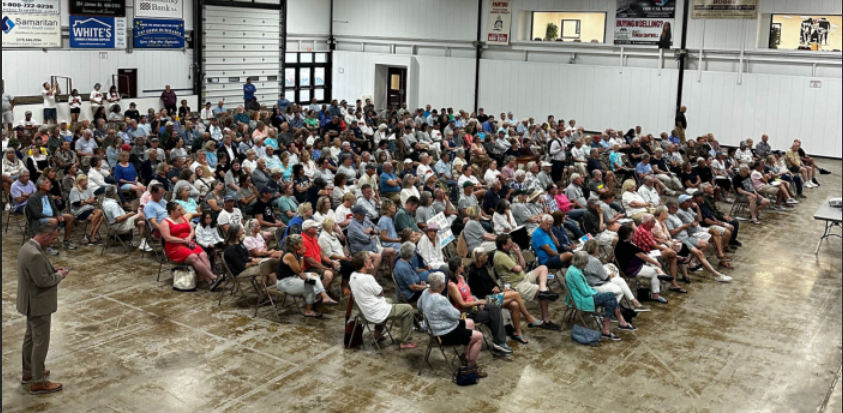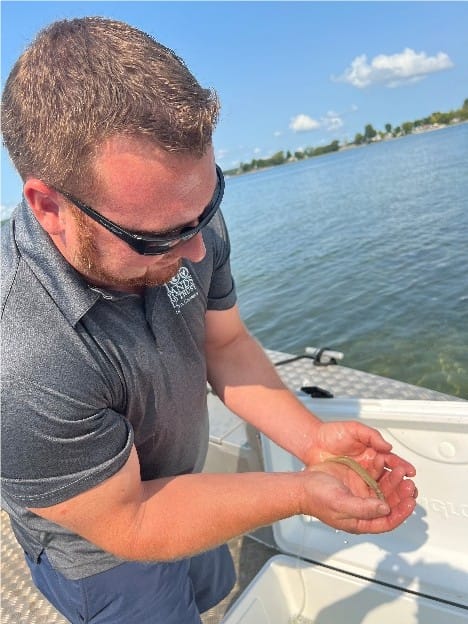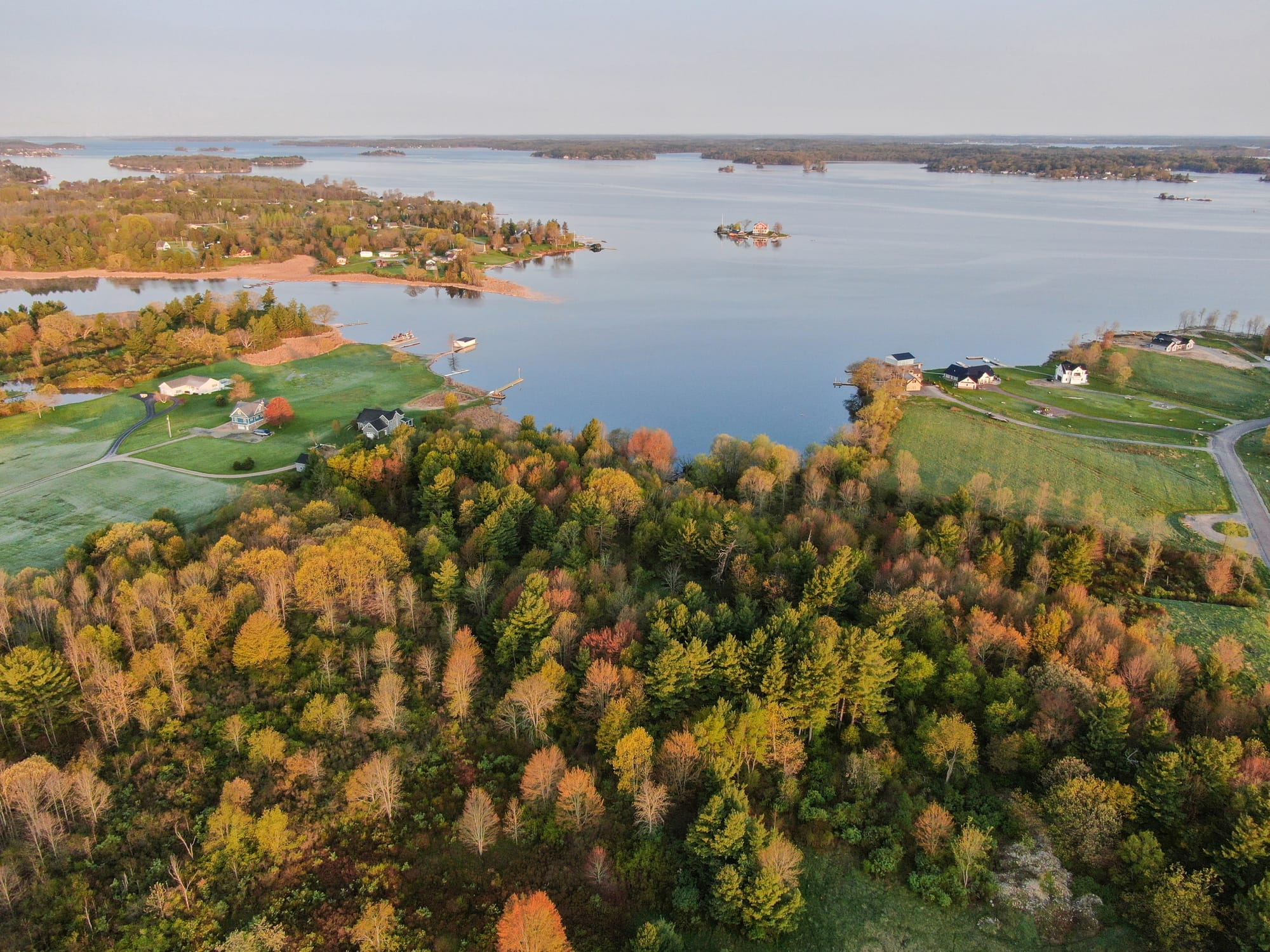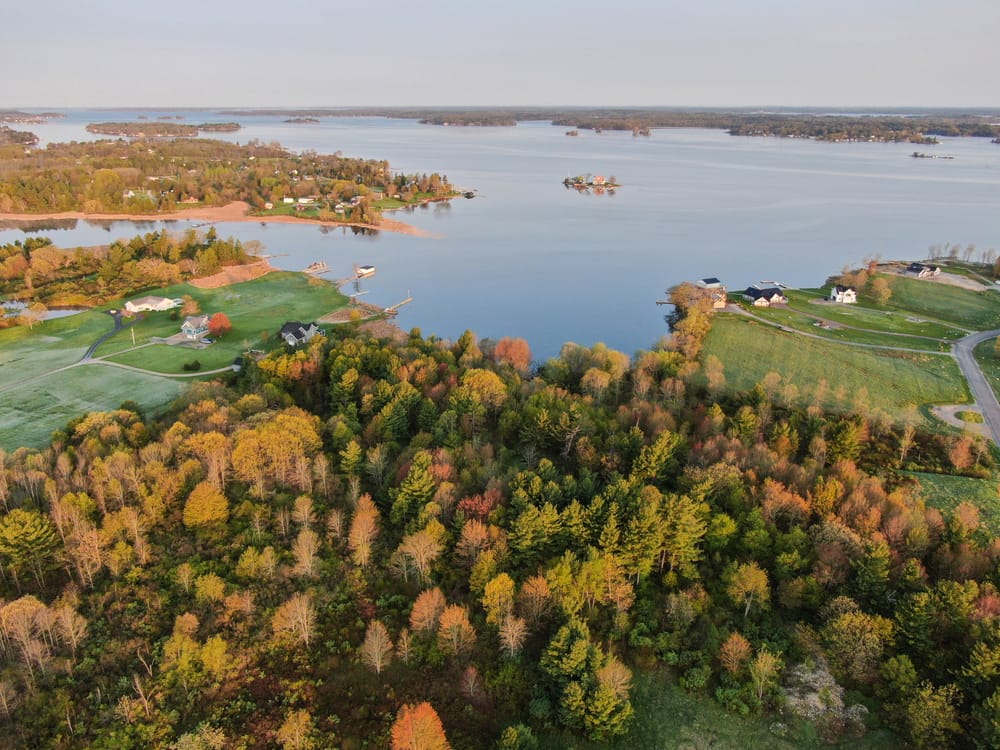A Year in the Fight to Save Blind Bay
by: Jake Tibbles
The fight to save Blind Bay has been a turbulent journey. Throughout 2024, the Thousand Islands Land Trust (TILT), Save The River (STR), and the Blind Bay Coalition, backed by an unwavering River community, have worked to preserve one of the St. Lawrence River’s most ecologically significant habitats. This is the story of a community’s resilience, an ongoing battle against eminent domain, and the glimmers of hope that emerged along the way.

From the beginning, the Coalition made it clear that this fight was not about opposing border security or U.S. Customs and Border Protection (CBP), but about ensuring that national security efforts did not come at the cost of Blind Bay’s irreplaceable ecosystem. The Coalition’s goal was not to dictate where a new border patrol station should be built, but to advocate for community-supported alternatives that would allow CBP to meet its operational needs without sacrificing the River’s natural and residential character.
For years, scientists at the SUNY ESF Biological Station have documented Blind Bay’s extraordinary biodiversity. Home to 53 different fish species—including the iconic muskellunge—the Bay serves as a vital spawning ground and a crucial stop along the Atlantic Flyway for migratory birds. Its natural shoreline helps mitigate flooding and filter water, benefiting both human and wildlife populations. However, all of this was put at risk when CBP announced its plan to build a 48,000-square-foot Border Patrol facility on Blind Bay’s shores.

From the beginning, the process has lacked transparency. CBP initially resisted calls for public hearings and opted instead for written comments, limiting real community engagement in this critical River issue. It wasn’t until June 2024—thanks to the persistence of Senator Chuck Schumer, Assemblyman Scott Gray, and County Legislator Phil Reed—that CBP finally held in-person public meetings. Over 800 passionate community members attended, voicing overwhelming opposition to the Blind Bay and Dockside Cottages sites, urging CBP to consider an alternative: the area adjacent to the Interstate 81 and Route 12, also known as The Cloverleaf.

For the first time, it seemed that CBP was willing to consider a community-supported alternative. The Thousand Islands Bridge Authority (TIBA) stepped forward and offered land near The Cloverleaf that would meet CBP’s operational needs, while minimizing environmental damage. It was a breakthrough moment. But just as hope began to rise, in late summer of 2024, not long after the public meeting, CBP shocked the community with an abrupt and disheartening decision.
In a move that blindsided many, CBP directed the Department of Justice to file a Declaration of Taking (DT) against the Thousand Islands Land Trust for legal access to Blind Bay. Despite months of public opposition, not long after, CBP rejected the area adjacent to The Cloverleaf, citing security concerns. With this action, CBP blatantly ignored the community’s voice. Coming just mere weeks after the public meetings where over 800 community members and elected officials urged CBP to evaluate alternatives.
Refusing to back down, the Coalition redoubled its efforts, working tirelessly behind the scenes to keep the conversation alive. Then, just before Thanksgiving, a breakthrough: CBP reversed its decision on The Cloverleaf alternative. In a formal statement issued on November 25th, Senator Chuck Schumer confirmed that the agency would now include The Cloverleaf site in its Supplemental Environmental Assessment (SEA), scheduled for completion in 2025. Shorty after, Troy Miller, Acting Director of CBP, release a statement outlining that the addition of the Route 81-Route 12 area property will require the completion of biological and cultural resource surveys.
While this victory is significant, the fight is far from over. The release of the SEA has been delayed until late summer or early fall of 2025, giving the Coalition time to continue its advocacy. For the first time in three years, CBP has shown a willingness to listen, but vigilance remains crucial. The Blind Bay Coalition—made up of TILT, STR, local municipalities, environmental organizations, and passionate individuals—has proven that when a community unites, it can challenge even the most formidable opposition.

Looking ahead in 2025, new factors may influence the fight for Blind Bay. North Country Public Radio recently reported that with a new administration now in charge, concerns have grown over the federal government’s emphasis on strengthening border security at both the southern and northern borders. That said, the appointment of Tom Homan, as the new border czar, may present a unique opportunity. Homan, a Jefferson County native, has deep ties to the North Country and may provide an opportunity to further open lines of communication, ensuring that any new CPB facility balances security needs with environmental conservation and community interests.
The fight to save Blind Bay transcends party lines. Over the last 3 years, TILT and STR have worked with local, state, and federal officials on both sides of the aisle in an effort to keep the proposed facility out of sensitive ecosystems and residential areas. This is a strategy that continues to prove invaluable. The Coalition remains steadfast, knowing that public support and continued engagement will be crucial in the coming months. As the fight continues, the River community’s unwavering commitment to save Blind Bay and keep the proposed facility off the immediate shores of the Thousand Islands serves as a powerful reminder of what can be accomplished when people come together to protect the places they love.
To stay informed and continue supporting this cause, please follow updates from TILT and STR and consider a contribution to the legal defense fund. Every voice and every effort count in ensuring that Blind Bay remains a vital habitat and cherished part of the Thousand Islands for generations to come.
By Bridgett McCann, Thousand Islands Land Trust
Bridgett McCann recently joined TILT as Communications Specialist. She is a graduate of St. Lawrence University with a Bachelor of Arts (B.A.) degree in Government and Environmental Studies. As a copy editor with experience communicating about conservation topics, she looks forward to making a positive impact in the Thousand Islands region, a place close to her heart. Originally from Rochester, NY, Bridgett spent many summers in the Thousand Islands. Outside of professional pursuits, she enjoys spending quality time outdoors and on the River with her family, friends, and two rambunctious black labs, River and Rosie.






